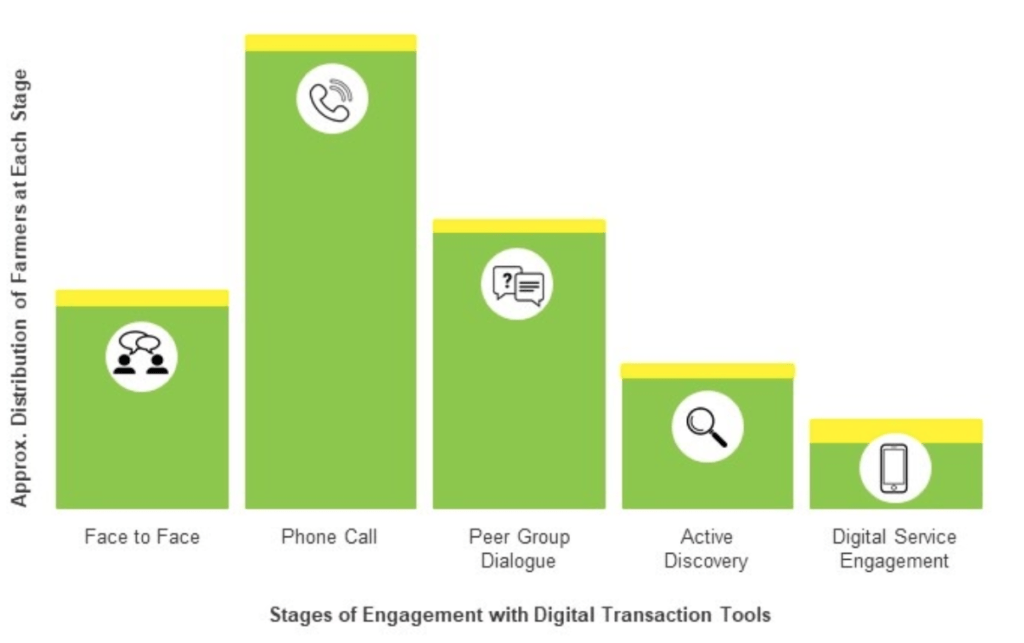When it comes to niche tech solutions, farmers have more options today than at any time in the past.
From marketplace apps that help them to buy supplies and sell their produce, to drones and sensors linked to their phones that help them keep their farms in check, there is an abundance of choice.
This range of mobile solutions is often said to be transforming the business of agriculture – particularly for the smallholders who make up most of the industry in emerging markets, such as those in Southeast Asia.
But are these farmers actually using these specialized technologies?
The answer is, “not that much”, according to new research from Grow Asia, a Singapore-based NGO (no relation to AgFunder’s GROW Accelerator) focused on improving smallholders’ income and productivity in the region.
Supported by the International Fund for Agricultural Development, Grow Asia interviewed 100 farmers across Indonesia, Myanmar, and Vietnam to understand their mobile habits.
Its report found that Southeast Asia’s smallholders are active users of technology – but not necessarily of the apps and other digital tools which have been specifically developed for their sector.
“We had a sneaking suspicion that the type of tech founders [have been] building was not necessarily aligned with what farmers [feel they] needed,” says Paul Voutier, director, knowledge and innovation at Grow Asia.
“We realised we’ve got all this great tech, but weren’t getting the adoption we’d like. The classic approach [has been] to build an app to check prices, advisory apps – but we quickly found that not many farmers used them,” he tells AFN.
Farmers’ five stages of digital adoption
Interviewees told Grow Asia that they “overwhelmingly” prefer to use general messaging and social media platforms – such as WhatsApp and Facebook – to support their farming operations, rather than industry-specific apps.
According to the research findings, Southeast Asian smallholders transit through a five-stage timeline of digital adoption. The earliest stage consists of face-to-face interaction with fellow farmers, suppliers, customers, and lenders, without a mobile tech element.
At the second stage, smallholders begin to employ a basic mobile device to conduct much of this day-to-day business, largely by way of voice calls. The majority of Southeast Asian farmers are at this stage in their tech adoption journey.

The next biggest number of smallholders have reached the third stage. This group has generally progressed to using feature phones or simple smartphones, and are joining local, village-level chat groups to exchange knowledge and advice, and share information on things like new products and market prices. They’re also using messaging apps to communicate directly with local retailers.
A much smaller group of Southeast Asian farmers reported that they’ve already moved on to Grow Asia’s fourth stage of mobile tech adoption – where they actively search for farming-related information on the web – and fifth stage, which involves direct digital engagement with service providers and other stakeholders through specialized apps and digital tools.
Service providers should “decentralize digitization”
The report concludes that the “attraction of local chat groups appears to be that they build on existing lines of trust; farmers feel comfortable sharing with, and learning from, people they know.”
Agritech startup founders are identifying myriad ways in which mobile tech can revolutionize smallholding in Southeast Asia. But according to the report, farmers across the region seem to place a higher premium on tools which deepen and enhance the relationships they already have – for the time being, at least.
For Voutier, large agribusinesses that are seeking to engage more closely with Southeast Asia’s smallholders need to “decentralize digitization.”
Funding the development of new apps is not by itself going to achieve that kind of engagement.
“Go out in the field, find staff in your business that engage with farmers every day – they’re the arms and legs of your digitization process,” Voutier says. “They can build the trust [and] use chat as segue [into deeper digital adoption].”




